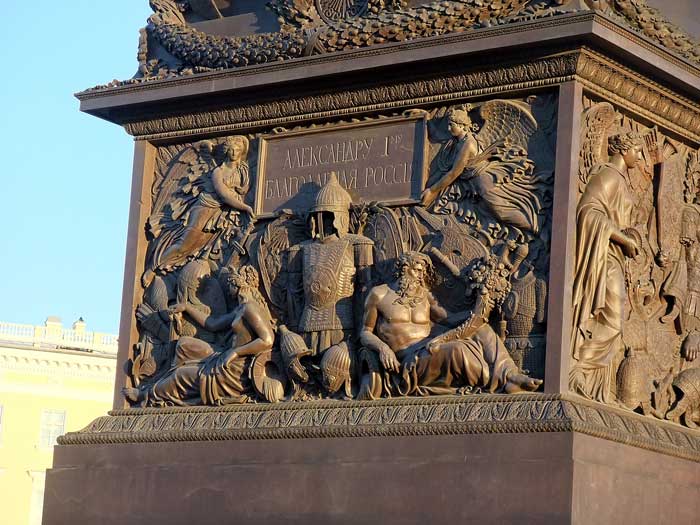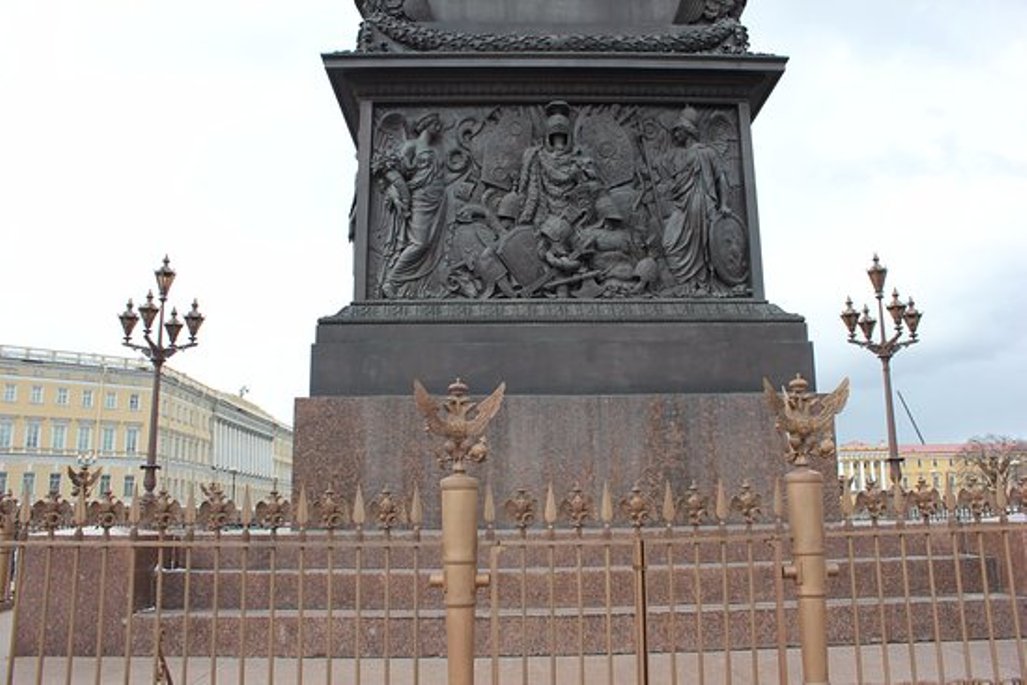
Standing majestically amid the gorgeous Palace Square and facing the magnificent Winter Palace in St. Petersburg, Russia, the Alexander Column was erected to commemorate the Russian victory in the war with France, under Napoleon Bonaparte. Built between 1830 and 1834, it was named after Emperor Alexander I, who ruled Russia between 1801 and 1825, covering the period of the Napoleonic Wars. The column, also known as the Alexandrian Column, is a terrific piece of architecture and engineering and often described as the focal point of Palace Square. It is said to be the reply of the Vendome Column in Paris, which was erected in honor of the victories of Napoleon's army.
The French-born architect Auguste de Montferrand, along with Swiss-born architect Antonio Adamini, designed the tall and slick Alexander Column. It was formally unveiled on 30 August 1834, on the St. Alexander of Constantinople’s Day. With its height of 155 feet 8 inches (47.5 m) from the ground, it is one of the world's highest freestanding triumphal columns, next to the Monument to the Great Fire of London, which is a freestanding column with a height of 62 m.


The majestic column is made of a single monolith of red granite, 83 feet 6inches (25.45 m) long and about 11 feet 5 inches (3.5 m) in diameter. The huge monolith was transported from Virolahti, Finland, by sea to Saint Petersburg, on a specially designed barge, named ‘Saint Nicholas’, with a payload of up to 1100 tons.
The difficult task of installing the column on the pedestal was successfully done by using specially designed scaffolding and cable plants. On the day of installation people swarmed the entire area and the windows and roof of the General Staff buildings were occupied by spectators. The Emperor and the whole imperial family also graced the occasion to observe the uplift. Finally, leaded by engineer A. A. Betancourt, 2.400 soldiers succeeded to lift the column and install the giant monolith perfectly on the pedestal within only one hour and 45 minutes, without any hiccup. The huge column, weighing about 661 tons was set so meticulously that it was fixed in position by its own weight and without any added support.

The imposing and dignified column is crowned with the statue of an angel holding a cross. The statue of the angel was designed by the Russian sculptor Boris Orlovsky. The angel's head is tilted and his eyes are fixed on the ground. In his left hand he holds a four-point Latin cross, and the right hand is lifted up to the sky. It is said that the face of the angel bears great similarity to the face of Emperor Alexander I.

The pedestal of the Alexander column, decorated on four sides with bronze bas-reliefs, was cast at the Berd's factory in 1833-1834. The panels of the bas-reliefs were designed to the planned size by the artist Giovanni Battista Scotti, while the sketches were produced by Auguste de Montfrrrand.
The bas-relief facing the Winter Palace depicts winged figures holding up a plaque. The classical composition also includes figures representing the rivers, Neman and Vistula, which were associated with the Patriotic War. Apart from that, there are images of the old Russian armours, used by the Russian princes, emperors and other war heroes, who fought and brought glory to the country. The other three sides of the pedestal are decorated with allegorical figures of Peace and Victory, Wisdom and Abundance, Justice and Mercy, The basic intention of these bas-reliefs depicted in allegorical form is to glorify the victory of Russian arms and to symbolize the courage of the Russian army.


During World War II, the Alexander Column in St. Petersburg was damaged by shell fragments. It is said that, in 1952, the authorities of the Soviet Union demanded to replace the statue of the angel at the top with a statue of Joseph Stalin. During the Soviet period the historic iron fencing around the column was removed and re-melted into cartridge casings. However, the fencing was subsequently restored in 2002. The present decorative bronze fence was aesthetically designed by Auguste Montferrand. The fencing is about 1.5 m high and is decorated with 136 double-headed eagles and 12 captured cannons were crowned by the three-headed eagles.


The dignified Alexander Column looks serene and graceful on the sunny evenings, shortly before the dusk, when the last rays of the setting sun touches gently the polished surface of the red granite column.